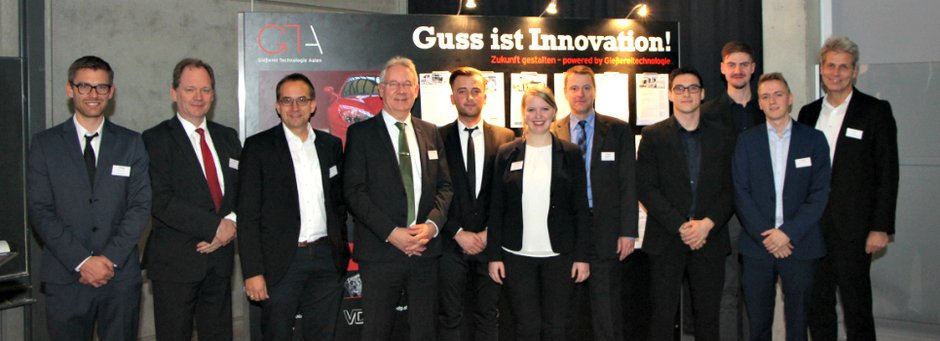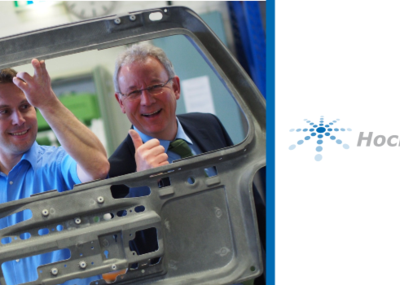After being welcomed by the rector of the Aalen University, Prof. Gerhard Schneider, and Prof. Dr. Lothar Kallien, the over 200 representatives of the foundry industry and students of the university were able to get a good impression of the current research. One major focus of the event’s lectures was on the importance of 3D printing and electromobility for the future, and the research project SmartPro, which deals with topics related to electromobility and lightweight construction in cooperation with the foundry industry.
The lecture series started with Dr. Ing. Christoph Dörr from the company TRUMPF on the topic "Chances through 3D printing in mold making for die casting". Using a die-cast insert, he demonstrated the advantages that can be achieved by manufacturing using the Laser Metal Fusion process. In this way, complex conformal cooling systems can be represented in the component, which are not possible in conventional production. This new temperature control simplifies the use of waterless microspray. In principle, 3D printing is predestined for tool production because die casting tools are produced in small quantities and the freedom of the designer is unlimited.
The lecture on "Influence of Electromobility on Cast Production and Production Technologies" was given by Prof. Lothar Kallien and Dr. med. Ing. Christian Wilhelm from Foundry Consulting and Solutions.
44% fewer castings in the pure electric drive
In his analysis, Prof. Kallien described the cast components in automobiles with different drive concepts. He considered the combustion engine, the plug-in hybrid and the pure electric motor. In the case of all-electric vehicles, the number of castings and thus the weight of the castings in the drivetrain drops by an average of 44% compared to the combustion engine. With the hybrid, the weight of the castings increases by about 20% compared to the internal combustion engine due to the double engine. Due to the increasing global demand for vehicles, especially the hybrid as a transitional technology, Prof. Kallien predicts an increase of cast iron production by 23% for the year 2025 and beyond.
Forecast: casting production in Germany until 2040
Dr. Ing. Christian Wilhelm presented his forecasts for the development of cast production. Casting production in Germany is expected to increase by 9% by 2030, and 9% by 2040. As the complexity of the parts increases, the total production cycles will increase by 35% by 2030 and by 16% by 2040. He sees further potential for the foundry industry in the expansion of the infrastructure for electromobility.
Dr. Thomas Niehoff from Linde AG gave a lecture on the topic "Melting Aluminum with Oxyfuel". In this process, gas is burned with pure oxygen to melt aluminum in an oven. Advantages of this method include the much higher efficiency, the associated increase in productivity and the savings in carbon dioxide.
The first part of the lecture series by Dipl.-Ing. Frank Peter Coenen from Hitachi Metals Europe GmbH with the topic "Advanced Mold Steel for Die Casting". In his presentation, he presented the latest development of a hot-work tool steel, which meets the high requirements for die casting molds. In particular, the formation of fire cracks leads to the destruction of the mold. The new steel can delay fire crack initiation and significantly increase the life of the mold.




